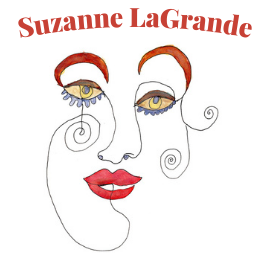7 Learning by Imitation
I saw a documentary once about Balinese dancing. In it, a young dancer sat cross legged while her teacher sat behind her, moving her arms in the intricate patterns of the dance.
How different, I thought that how I had learned dance, by watching the teacher’s body and then trying to translate what I’d observed into movements.
In this method, the dancer did not rely on her eyes but on the sensations of movement in her body. The teacher in moving her harms, gave her a felt sense of the dance. She learn first what the movements felt like in her body and then later, what it was supposed to look like from the point of view of the audience.
This is also, at least in part, how many painters learn to paint. Apprentices would copy and sometimes paint the work of the master painter. In tracing the lines, and imitating the style of the master painter they learned by imitation the techniques of the masters.
Looking at Hilma af Klint’s paintings, my hand wanted to move. My body seemed be very engaged in whatever was going on in these paintings. And so, in addition to looking at her paintings, I began imitate certain elements in her paintings.
We had one thing in common: we both loved spirals.
And so I began a kind of dialogue with her paintings, or rather my hand did, picking out certain elements and shapes, as if I were taking notes on not only what her paintings looked like, but also feeling as I traced, the impulses, the spirit that moved her and brought these images of her into their particular form.Above is one painting I did as I attempted to understand Hilma’s work. It is a very loose imitation of The Evolution, №9, Group 6 1908 © The Hilma af Klint Foundation.
I call it Multidimensional Mariposa.

